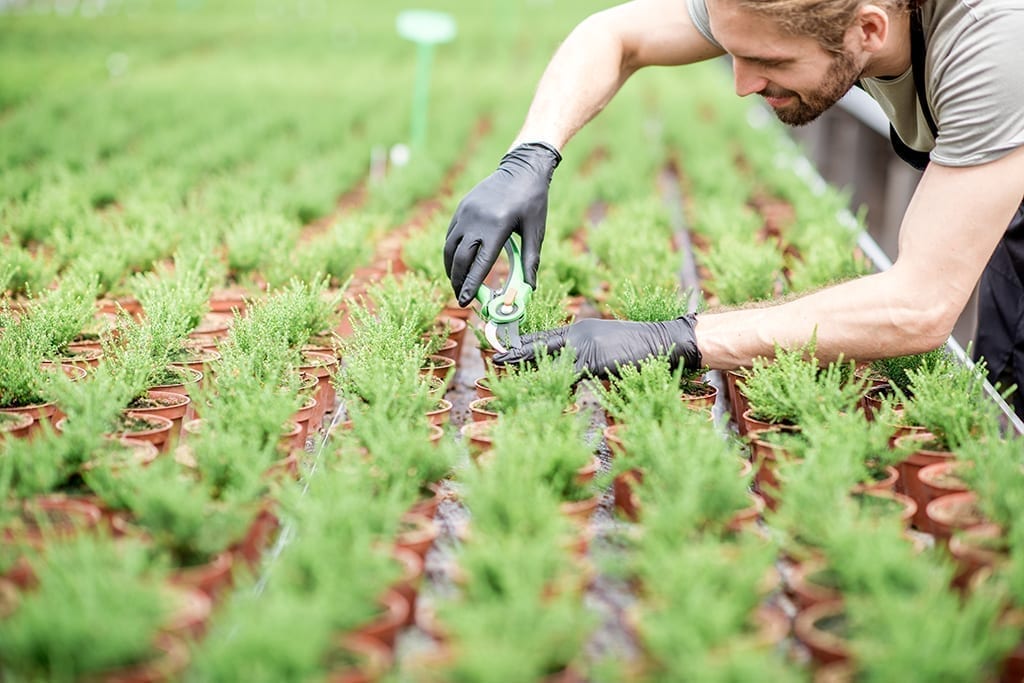 As sourcing plant material has become more difficult than ever, due to high demand and a stressed supply chain, florists looking to expand their plant sales recently received some much needed perspective and advice from their peers.
As sourcing plant material has become more difficult than ever, due to high demand and a stressed supply chain, florists looking to expand their plant sales recently received some much needed perspective and advice from their peers.
Yesterday during SAF’s Great Big Plant Event panel, “Best Practices for Sourcing Plants,” moderated by Heather Waits, president of Bloomtastic Flowers, in Upper Arlington, Ohio, plant veterans from retail, wholesale, and grower segments discussed the state of the supply chain today, and best practices for expanding plant sales. While each has encountered their own share of challenges in sourcing plants, there was one thing all three panelists could agree on: the biggest need, when it comes to sourcing plants today, is time.
Up Against the Clock
Whether it’s the time it takes to actually grow the plants, the time it takes to find a source for the plants, or the time it takes to get those plants in your shop, the days, weeks, or months of the sourcing process are incredibly challenging to today’s floral and plant retailers—because the products simply aren’t available in the numbers needed. And sourcing products, says panelist Eileen Weber, vice president of Lake Forest Flowers, in Lake Forest, Illiois, is likely to get worse before it gets better. Lush and full plants, she notes, aren’t easy to find. Brokers and wholesalers can’t use the specs listed plant sheets anymore because plants are leaving the greenhouses so early they’re behind on their growth stage. Plants are selling so quickly that vendors can’t keep a reliably updated list of availability.
Retail florists aren’t the only ones experiencing sourcing challenges. Panelist Sally Chapin, fresh cut operations manager and plant buyer for Dillon Floral Corporation, in Bloomsburg, Pennsylvania, notes that as a wholesaler she’s run into similar issues as retailers, like the unreliability of availability lists. She keeps tabs on every source she has, and will ask for alternatives to keep a wide assortment for her customers, but, as she notes, growers can’t keep up with demand. “It takes time to grow plants,” she says.
And getting those plants in the ground to grow in the first place takes time, too, adds Austin Bryant, national sales executive for Heart of Florida Greenhouses, in Zolfo Springs, Florida. There are challenges, obviously, with getting physical materials with container costs and backups in freight coming from Central and South America. The tension point that Bryant sees most acutely, isn’t “what we’re willing to put in or willing to grow,” he notes, but rather having the actual product to plant. “We can only put in what we can physically get cuttings for.”
Putting Time On Your Side
The thought of trying to grow your plant business when facing myriad sourcing challenges can seem daunting, but the panelists had some tips to get ahead of the game.
Chapin suggests opting for several choices, and asking vendors for new varieties, or second or third choices if your first choice is unavailable. For retailers, she adds, get your orders in as soon as possible. “The more you can pre-book, get your orders in early, so we can read our crystal balls better. It makes buying easier when we know what the demand is.”
Weber echoes those sentiments, adding that retail florists also need to get creative about what they’re ordering — and create a marketing message to match. “If you can’t get your first choice, but you can get your second or your third choice, then get creative in your marketing,” she says. “You need to market the product that you can get. Everything you have you should be able to make a profit on.” Come up with a special social media post, put a signpost out — anything that will generate business and buzz. Just keep generating interest, she says.
Managing vendor relations during these challenging times is also essential to easing sourcing woes. Each of the panelists stressed patience with vendors — everyone is experiencing similar sourcing challenges across the industry. The key: don’t put all your eggs in one sourcing basket. Sourcing from as many places as possible is time consuming, notes Bryant, but necessary. If one vendor can’t come through on product, you still have others who can provide for you and your clients. Communicate openly and honestly with your vendors, as panelists noted two-way communication is essential to sourcing. Above all, says Weber, “Be friendly, loyal, and patient with your vendors.” And critically important, she adds, is paying on time.
As sourcing challenges persist, the panelists said thinking outside the box has been helpful as they adapted and pivoted throughout the past year. Weber notes that her company has implemented practices such as doing rooting and cuttings in their own shop. They are also potting plants to size in-house, when the size they needed isn’t available. Bloomtastic’s Waits noted that she tapped into the local Amish community to source plants last fall.
Looking Ahead
Issues around sourcing plant materials aren’t going to resolve themselves overnight. Exploring all of your sourcing options and keeping communication open between you and your vendors can help mitigate issues and help your business blossom—but it takes time to do it right.
“Growth has to be sustainable,” says Bryant, and adds that when inputs can start coming in more regularly, that regularity will bubble up through the supply chain and, “a lot of the stress on the industry would subside.”
Molly Olson is a contributing writer for the Society of American Florists.

